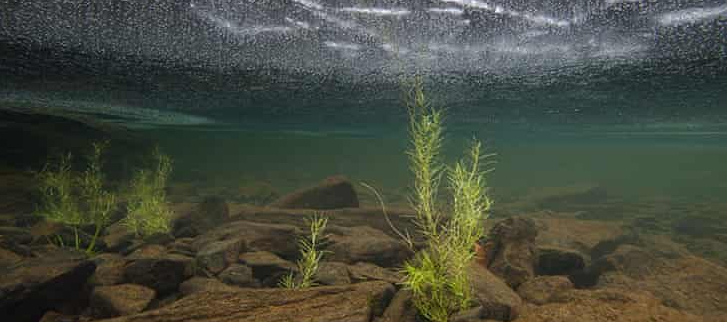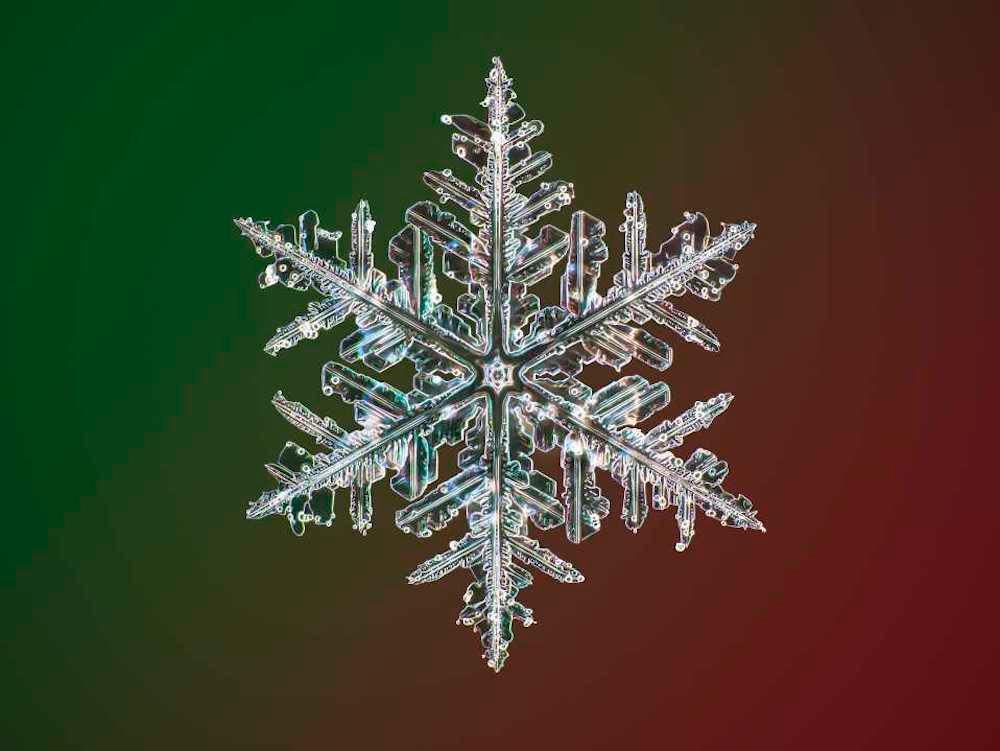The Glory of God in the Three Phases of Water
(No, this isn’t about Trinity metaphors)
In Job 37, Elihu intends to counsel the suffering Job by pointing his attention to God’s majesty displayed in the water cycle.
5 God thunders wondrously with his voice;
he does great things that we cannot comprehend.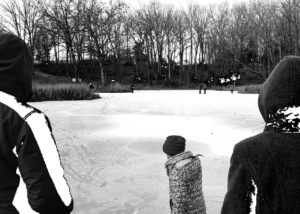
6 For to the snow he says, ‘Fall on the earth,’
likewise to the downpour, his mighty downpour.
7 He seals up the hand of every man,
that all men whom he made may know it.
8 Then the beasts go into their lairs,
and remain in their dens.
9 From its chamber comes the whirlwind,
and cold from the scattering winds.
10 By the breath of God ice is given,
and the broad waters are frozen fast.
11 He loads the thick cloud with moisture;
the clouds scatter his lightning.
12 They turn around and around by his guidance,
to accomplish all that he commands them
on the face of the habitable world.
13 Whether for correction or for his land
or for love, he causes it to happen.
Matthew Henry opens his commentary on verses 6-13 of Elihu’s speech with beautiful articulation, pressing his readers to note the glory of God in all forms of weather.
“The changes and extremities of the weather, wet or dry, hot or cold, are the subject of a great deal of our common talk and observation; but how seldom do we think and speak of these things, as Elihu does here, with an awful regard to God the director of them, who shows his power and serves the purposes of his providence by them! We must take notice of the glory of God, not only in the thunder and lightning, but in the more common revolutions of the weather, which are not so terrible and which make less noise.”
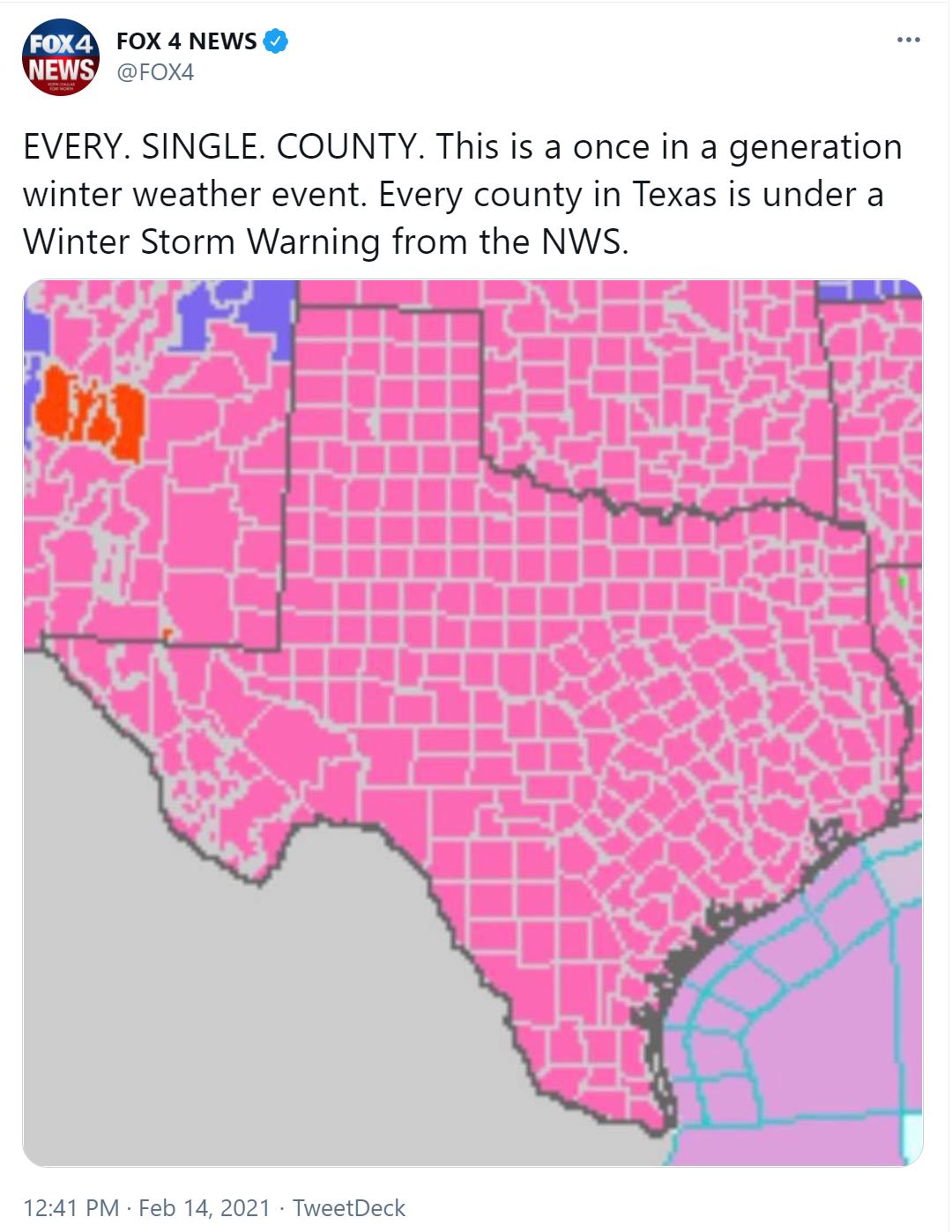
God’s mercy towards man and beast alike is marvelously displayed in the three common states of water: Solid, Liquid, and Gas. As I write, there are 5 inches of snow on the ground and more is falling. We are taking extraordinary measures to keep our pipes from freezing due to record-breaking cold. In Texas, our former home, every inch of its 268,597 square miles was under a winter storm warning on Valentine’s Day. Seems appropriate to begin this series of entries with an examination of frozen water as an instrument of God’s mercy.
Snow and Ice
The freezing point of water is 0°C (32°F). At this temperature, water molecules organize into a 3-dimensional lattice. It is a crystalline structure, manifesting as frost, ice, and snow. Generally speaking, ice lattices are octahedral, the 3D version of a hexagon. Although this is oversimplification, it provides a useful picture of what ice looks like at the teeny tiny microscopic level. In the figure below, note the open spaces inside the octahedrons formed by regularly-distributed oxygen (red) and hydrogen (white) atoms. They matter. The way water works at a large scale with people and fish depends on the way water works at the atomic scale.
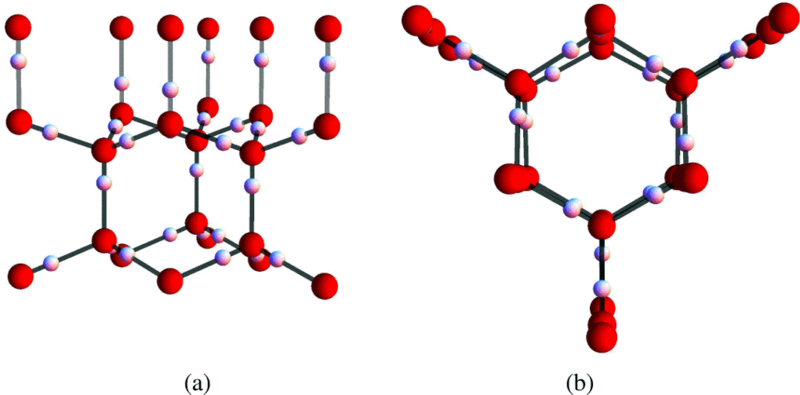
FIG. 1. (a) (b) (Color online). Crystal structure of hexagonal (Ih) water ice. Water ice can be viewed as a frozen configuration of water molecules,satisfying the Bernal–Fowler “ice rules” [1, 2], in which each oxygen (red sphere) forms two short, covalent bonds, and two long, hydrogenbonds with neighbouring protons (white spheres). Oxygen atoms form an ordered lattice, belonging to the hexagonal space group P63/mmc,with a 4–site primitive unit cell. Protons do not show any long–range order. (a) Structure viewed perpendicular to the hexagonal symmetryaxis (the crystallographic c-axis). (b) Structure viewed along the hexagonal symmetry axis.
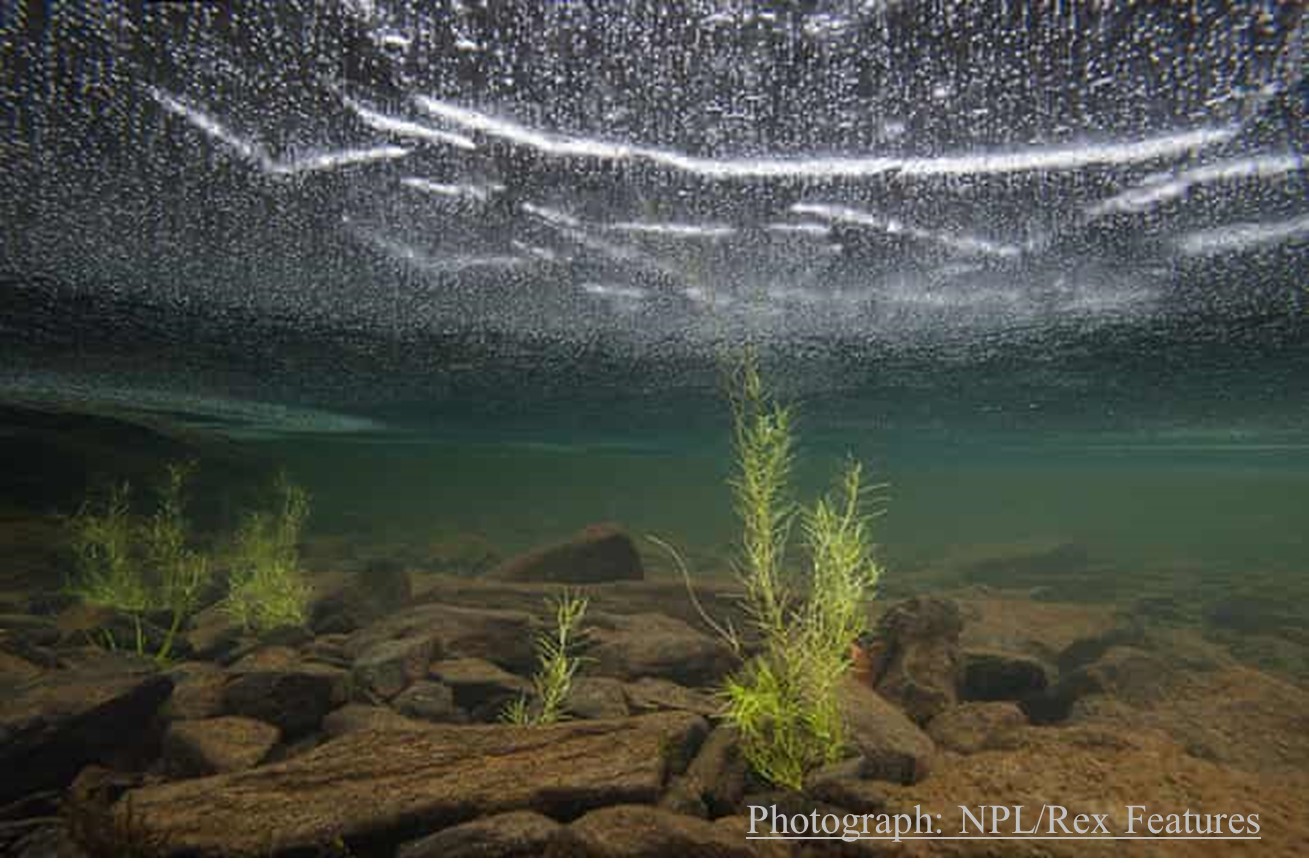
In God’s wonderful wisdom, water is actually most dense at 4°C (39.2°F). At this temperature, water molecules distribute themselves more closely than they do at the freezing point. Think of the atoms being cinched inward, just as you draw tight a hoodie drawstring on a cold day. There is less space inside the cold-but-not-yet-frozen liquid water lattice than at 0°C when water enters its solid state. This is a great mercy to both man and beast. Without this quality, water in freshwater lakes would freeze solid because ice would sink to the bottom and grow upward. This would kill all but the hardiest and mostly microscopic creatures and some lakes would never thaw because of the heat capacity of water. Liquid water that is more dense sinks to the bottom of the water column while less-dense ice floats to the top, creating an insulative layer. Thus, a warm(er) layer of liquid water is maintained near the bottom of the lake to sustain aquatic life during the winter. Moreover, because the molecules of 4°C water are bound more closely and there is less kinetic energy (the water molecules aren’t moving around so vigorously), more dissolved oxygen is retained in the spaces between the H2O molecules. Like land animals, aquatic animals need oxygen too, they just get it in dissolved form from the water that washes over their gills or hemolymph, the blood-like substance inside invertebrates. The cold, oxygenated layer of water beneath the ice of frozen lakes is a refuge for the fish and invertebrates during winter.
Matthew Henry said this about God’s provision of refuge for animals:
“The beasts also retire to their dens and remain in their close places, Job_37:8. It is meant of the wild beasts, which, being wild, must seek a shelter for themselves, to which by instinct they are directed, while the tame beasts, which are serviceable to man, are housed and protected by his care, as Exo_9:20. The ass has no den but his master’s crib, and thither he goes, not only to be safe and warm, but to be fed. Nature directs all creatures to shelter themselves from a storm; and shall man alone be unprovided with an ark?”
Take advantage of these waning months of winter to ponder the molecular behavior of water. Let the shape of frozen water thrill you! But don’t stop with mere fascination. Follow where the ice road leads, where the Creator of ice built it to lead. That is, to Himself. Then glorify God and enjoy Him!
“Ice Queen” by Nathan Myhrvold (Nathan Myhrvold / Modernist Cuisine Gallery, LLC)

